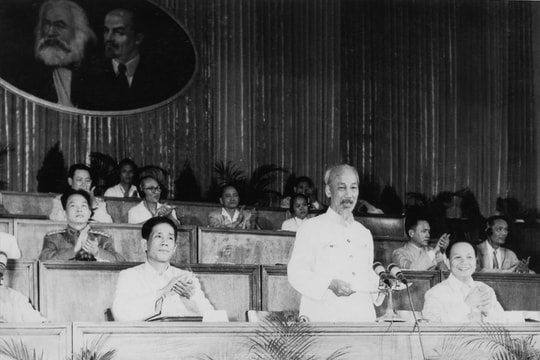(Baonghean.vn) - The road ahead for ASEAN still has many challenges, but also opens up many opportunities for Southeast Asian countries to ensure stable and sustainable growth.
 |
| Over 50 years of formation and development with the current membership of 10 countries, the Association of Southeast Asian Nations (ASEAN) has achieved remarkable economic and social successes and is considered one of the most successful multilateral organizations in the world. |
 |
| ASEAN member states have clear differences in political regimes, economic development levels, and cultural and religious backgrounds. However, this region has created a cohesive multilateral cooperation organization over the past 50 years, creating a stable environment for member states to develop economically. |
 |
| ASEAN has now developed into the third largest economy in Asia, with a population of over 630 million people and a total GDP of 2,400 billion USD. This region has an important geopolitical position, not only connecting Asia and Oceania, but also linking the Pacific Ocean with the Indian Ocean. |
 |
| Over the past three decades, many ASEAN economies have grown strongly thanks to exports, which has led to major demographic changes as well as the rise of a wealthy middle class in the region. |
 |
| Although ASEAN's population is smaller than that of China and India, the region's population structure is relatively young, with those aged 35 and under accounting for over 50% of the total population, not only providing an abundant labor force for the region but also creating a potential consumer market. |
 |
| Although recently, due to fluctuations in oil prices, many major economies have slowed down, affecting the economic development of ASEAN countries, but growth is still the main trend of ASEAN countries' economies in 2017. For businesses that continue to seek growth, the ASEAN region is still a reliable destination to bring profits to their businesses. In the photo: An automobile factory in Indonesia. |
 |
| ASEAN was founded in 1967, just two years before the advent of the Internet. As such, ASEAN’s impressive growth coincided with the Third Industrial Revolution, which was fueled by computers and communications. |
 |
| But today, the export-led growth model, increased productivity and natural resource exploitation that has lifted ASEAN countries out of poverty over the past few decades will come under pressure from the Fourth Industrial Revolution (Revolution 4.0). This disruptive transformation will be concentrated in the fields of genetic technology, robotics and artificial intelligence, nanotechnology and biotechnology. |
 |
| Business leaders in ASEAN countries are well aware of the possibility of falling into the pit of “premature deindustrialization” as their economies approach the threshold of large-scale industrialization. In Indonesia and Vietnam, for example, post-industrial automation has been chosen because it is inexpensive and highly productive. Although the labor force in Asia is still considered cheap by developed country standards, the investment cost of post-industrial automation is too expensive and unproductive. |
 |
| In the 4.0 revolution, if any state is quick, seizes opportunities well as actively invests in developing human resources and infrastructure to meet the requirements in using modern digital technologies, that state will contribute positively to improving life, increasing income for people, creating high-value products. On the other hand, the rapid economic development for many years in Southeast Asia has led to complex problems such as air pollution, traffic congestion, increasing crime rates, etc. |
 |
| ASEAN is home to some of the fastest growing cities in the world, including some of the most populous cities in the world. The annual urbanization rate in some countries is 5.6% in Laos, 4.6% in Cambodia, 3.9% in Myanmar and 3.3% in Indonesia. Singapore is one of the fastest urbanizing countries in the world. |
 |
| Studies on the impacts of climate change on ASEAN countries have shown that the Philippines, the entire country of Cambodia, the Mekong Delta of Vietnam, the eastern and northern regions of Laos, Bangkok city, Thailand and the entire Sumatra and Java islands of Indonesia will be the most severely affected by climate change. In the photo: Unprecedented saltwater intrusion in the Mekong Delta. (Source: Cdc) |
 |
| ASEAN is still heavily dependent on global trade flows as well as investment, trade and technology from major trading partners, so the bloc is currently working hard to negotiate multilateral free trade agreements. A series of economic and international and regional security challenges require ASEAN to reform and adjust to be ready to adapt to the new situation and maintain stable and sustainable growth. |
Peace
(Synthetic)



















.jpg)

